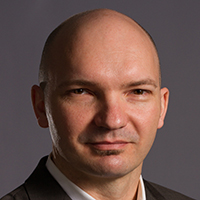Workshops: Energy: The Key Ingredient for Successful Urban Design and Master Planning

Oliver Baumann
President
Baumann Consulting, Chicago
In the words of Klaus Philipsen, FAIA: “Urban design is the art of designing cities, i.e. architecture taken to the urban scale, the site, the neighborhood or an entire city. It includes consideration of networks and non-physical aspects such as visual relations, communication, transport, air flow, infrastructure and the like in such a manner that solids, voids and the various systems form synergies, are sustainable, resilient, and equitable. Master planning is the creation of a framework in which development parcels, massing, heights, relationships of buildings, circulation, and streets are defined in enough detail to define predictable outcomes, but with sufficient flexibility to allow various responses of actual developers and designers of which there may be several or many within one master plan area.”
What’s missing from these definitions—and many real-world planned large-scale developments—is the consideration of energy. When urban design and master planning efforts neglect energy demand, distribution and supply aspects, individual developments forgo the opportunity and potential of shared energy resources inherent in all newly-planned communities and will underperform their collective potential. Integrating energy as a planning discipline is essential to realizing truly sustainable, resilient, and equitable urban environments.
Two examples highlight the importance and opportunities that an integrated energy master planning workflow offers to campus, neighborhood and city developments. A net-zero energy neighborhood development in a North American city, and a former office campus in Stuttgart, Germany with both historic structures and new, mixed-use buildings and a residential tower—illustrate the approach, process and outcomes of integrated energy master planning.
